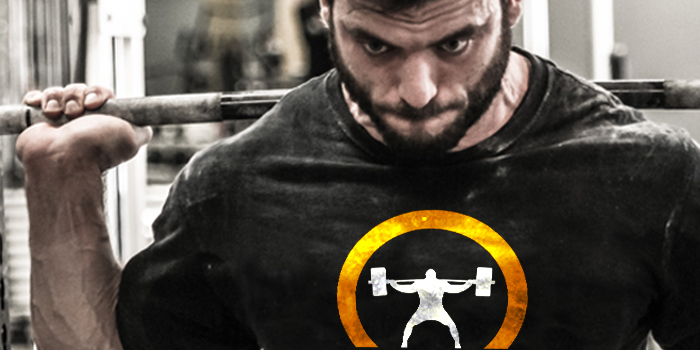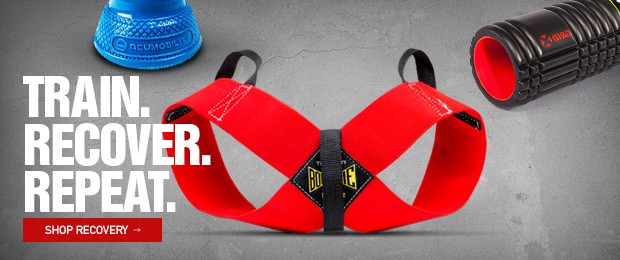
The BB for PL series describes how you can incorporate bodybuilding exercises into your powerlifting training for big benefits in strength and aesthetics. The first part of this series explained the benefits of vacuums and reverse hyperextensions for building a big squat and deadlift and a sleek physique. This second article introduces a new exercise, one that can build a beastly bench press and boulder shoulders at the same time.
It’s no secret that pretty much every powerlifter wants a big bench press, and every bodybuilder wants that X-shaped physique with wide shoulders and a narrow waist. And pretty much every powerlifter and bodybuilder knows that if you weren’t blessed with the genetics to have tremendous upper body size and strength, it’s going to take a lot of hard work to build them. Hard work can make up for a lot of things, but it’s not a substitute for smart work. You need to train hard and smart if you want to reach your full potential. And to train smart, you need to address your weak points.
For me — and for a lot of other strength athletes — rear delts are a weak point. That’s a problem because your rear delts are a really important part of both your bench press and your physique. When you’re benching, your rear delts help to stabilize your entire shoulder, allowing you to keep a tighter descent and better bar path. On heavy attempts, weak or overloaded rear delts can often lead to rotator cuff injuries when the smaller muscles of your shoulder girdle try to compensate for a load they’re not ready to handle. Rear delts are just as important for bodybuilders because they make the whole shoulder look wider (and make the waist look smaller in comparison)!
RECENT: Bodybuilding Exercises for Powerlifters: The Vacuum and Reverse Hyperextension
The elitefts Exercise Index has a whole list of movements you can use to train your rear delts. Unfortunately, if you’re not used to using them, other muscles are probably going to take over instead: traps, medial or front delts, or even rhomboids can all assist or even dominate the rear delts in most of these movements. So, before we get started on anything, we have to learn to activate the rear delts effectively.
Activating the Rear Delts
For powerlifters — or anyone who does a lot of pulling, really — it can be difficult to activate your rear delts because the traps tend to take over. The traps are a much larger and stronger muscle group, but they can’t stabilize the shoulders the same way. If your traps are really tight, you might need some bodywork to mobilize your thoracic spine and be able to really get your rear delts working. Can’t get bodywork? Try this yourself.
If your mobility is decent, but you’re still having trouble activating your rear delts, try this:
- Lie flat on your back on the floor, with your knees bent and core braced.
- Lift one arm so that it’s perpendicular to your body, and try to “punch” the ceiling by driving your fist towards the ceiling. Use your shoulders for this, not your lats.
- While keeping that tension, drive your shoulder back towards the ground. Focus on the feeling in your shoulder — that’s your rear delts contracting. It may help to slightly externally rotate your elbow (away from your body).
- Repeat for the other arm.
You can try this same movement in the horizontal plane using a chest-supported seated row.
Once you’re getting used to the feeling, try some light isolation exercises for the rear delts, like bent-over lateral raises, which are shown at the end of the video. In fact, try doing 100 reps of bent-over lateral raises with 5 or 10 pounds, every night for a week. At the end of 7 days, your rear delts will be good to go!
The Rear Delt Row
Once you’re comfortable activating the rear delts, you’ll be able to train any shoulder movement more effectively, but it’s still difficult to load the rear delts with a good amount of weight. Rear delt rows are perfect for this: you can use a weight similar to what you use in a regular seated row, without relying on the lats and biceps. Here’s how to do them:
- Find a seated row machine that allows you to brace your feet and get a good stretch in the shoulders without rounding your back.
- Take a grip slightly outside of shoulder width, on a bar like the ones usually used for lat pulldowns. I like to place my hands right at the point where the bar starts to angle downwards.
- Pick a weight that would be fairly light for seated rows (around 50% of what you’d use for a set of 10-12 reps).
- Brace your core, making sure to straighten your thoracic spine. Then lean slightly backward, so that your shoulders are behind your hips and your chest is held high.
- Begin the movement by pulling with the rear delts, while keeping the traps, lats, and biceps as relaxed as possible. It will help to keep your elbows high, in line with your shoulders, and to cock your wrists slightly outward. It might also help to think about “pulling the bar apart” rather than pulling back.
- Continue pulling with the rear delts until your elbows are bent at a 90-degree angle (the range of motion of this exercise is pretty small). Hold that position for a one-second count, squeezing your rear delts as hard as you can. You’ll probably get a little bit of bicep and rhomboid involvement here, but that’s okay.
- Slowly return to the starting position, making sure to get a slight stretch in the shoulders before beginning the next rep.
- Repeat for sets of about 10-12 reps.
Since it’s often easier to learn by watching than by reading, here’s a video to show how I perform this exercise:
Note that you probably won’t be able to isolate the rear delts, but that’s okay. Just compare how much they’re contracting in the first part of the video above to the second part, and you should feel pretty confident that you’re getting good rear delt work in.
Over time, you should be able to work up to the same weight in the rear-delt row as you’d use in the regular seated row. Since it’s more of an isolation exercise, you can incorporate the rear-delt row into your existing program pretty easily without hurting your recovery. I like to use them as both a warm-up for heavy benching and as a heavier exercise when I’m training shoulders.
Using the Rear Delts in the Bench Press
It won’t take long to add quite a bit of strength and size to your rear delts, and so you should be able to recruit them in the bench press pretty quickly, too. You might only feel them working on the descent, but that’s okay -- in all three power lifts, having a strong descent is the best way to make a strong ascent.
Let’s start by reviewing some of the first steps in bench press technique from the elitefts Bench Press Manual:
- During your setup, pull your upper back and lats together (it won’t be comfortable). This gives you a solid base to press from.
- After you’ve unracked the bar, but before you begin the descent, try to pinch your upper back and shoulder blades together even more tightly. This will shorten your range of motion and help make sure that you don’t rush the lift.
- As you lower the bar, keep your elbows tucked in a position that feels natural. Control the bar as you lower it towards your lower chest.
The rear delts are working in all three of these steps, but if you’re not used to using them (or if they’re underdeveloped), you might not realize it. When you’re pulling your upper back and lats together, you should also be activating your rear delts (the cue “pull the bar apart” is helpful here). Doing so will reinforce your base on the bench and help put your front and middle delts in a safer and stronger position when you’re beginning the ascent.
Then, as you lower the bar, use your rear delts to help control the descent. Think of this just like you think of the rear-delt row (you’re just on your back instead of sitting up). Using your rear delts on the descent will help you to hit the same point on your chest each time you press, and keep a strong paused position on your chest while you wait for the press command.
Personally, I know that if I can use my rear delts to control the bar on the descent, then I’ll be able to press it up. Once my rear delts aren’t strong enough, the movement becomes much, much more difficult. The difference might not be so pronounced for you, depending on your individual strengths and weaknesses, but working your rear delts will absolutely help increase your bench press.
Wrapping Up
The rear delt row is a simple but very effective exercise, and I strongly encourage you to give it a try. That said, don’t neglect the other areas of your shoulder girdle. It’s just as important to keep your rotator cuff muscles healthy and happy — a strain there is a guaranteed setback on your bench press. And your front and middle delts are usually going to be the big movers when it comes to pressing. Always try to be balanced, especially when you’re programming your assistance movements.
And, as always, if you have any suggestions for improving this article, or for articles you’d like to see in the future, please let me know in the comments!










